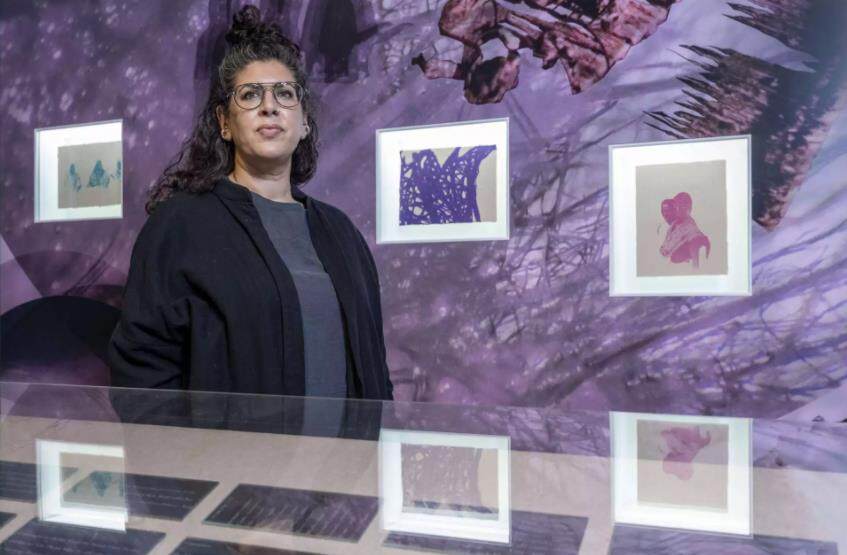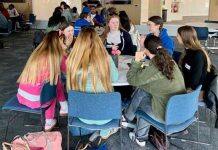The experiences of jute workers in Bangladesh and India will be explored in a new commission at V&A Dundee, developed in partnership with Dundee Heritage Trust and the University of Dundee.


The experiences of jute workers in Bangladesh and India will be explored in a new commission at V&A Dundee, developed in partnership with Dundee Heritage Trust and the University of Dundee.
Artist, curator and writer Swapnaa Tamhane has been inspired by archives held at the University of Dundee and Verdant Works. Her research explores the colonial context of jute and the lives of workers in and around Kolkata, which in the 19th and early 20th centuries was known as Calcutta under British imperial rule.
Jute was known as the ‘golden fibre’ because of the huge profits that were made from it, though those profits were rarely shared with workers in Dundee or in what was then British-ruled Bengal, which is now split between Bangladesh and India.
In the 19th century workers in Bangladesh and India harvested raw jute to be shipped to Dundee for processing and manufacturing, and by the early 20th century they worked in mills in and around Kolkata that were mostly managed by Scots. That shift is seen as helping to accelerate the decline of the jute industry in Dundee, by moving manufacturing closer to the source.
Tamhane’s work is called The Golden Fibre and is now installed in V&A Dundee’s Scottish Design Galleries. It is a collage of archival photographs and drawings of female workers as well as microscopic images of jute paper that the artist makes by hand. This laborious process involves cutting up jute cloth, soaking it in the caustic chemical lye, then beating it in water for hours to create a pulp that is then shaped and dried into rough sheets of paper.
Part of the work is an installation called Tum Banglá mat bolo, ham kuchh nahín samajhtá hai (You don’t speak Bengali, I can’t understand anything). It features extracts from a Hindustani language exercise book used by Scottish supervisors to control workers in the Bengali mills. Colonial attitudes are revealed through translations of orders such as ‘Hurry up’, ‘Keep quiet’, ‘Do not waste oil’ and ‘Do not make any noise’.
The work explores how the colonial system connected workers across the continents, so hand tools used in the Dundee mills and factories, including a bale hook, hackle, porter gauge and pair of weaving scissors from Verdant Works, are also on display.
Many workers saw these tools as being like extra fingers on their hands. They were not provided by the employer but had to be purchased by the workers from local ironmongers and cobblers. Tamhane sees the potential of these objects for connecting us with the skilled people in Dundee and Calcutta upon whom this global industry depended.
Caroline Brown, Archivist at the University, said, “This work demonstrates the important role of archives in helping us revisit the past and revealing narratives that have been lost or never told.
“The jute collections held by the University of Dundee were primarily created by owners and managers but we can still catch glimpses of the lives of ordinary workers in Dundee, Bangladesh and India. This is an opportunity to retell those stories and to consider their significance today.”
Swapnaa Tamhane said, “I think about the role of the hand and the handmade in relation to drawing or making paper from either cotton or jute. I am curious about how this may connect me to the hands of many others across continents who have harvested, processed and manufactured these materials over centuries.
“After the paper is pressed, I put handmade jute paper under a microscope and could see how the fibres bind together arbitrarily. To me, they become a metaphor for a protest against order and structure.
“In the commission for V&A Dundee, I wanted to focus in on the lives of women in the Bengali jute industry. Some of them were widows, some were fleeing their homes, some were supplementing the household incomes. Most of the women who worked in the fields to harvest raw jute were undocumented as part of the workforce. The archival images I came across are precious traces of their lives, about which we know very little.”
The display is available to see for free as part of V&A Dundee’s Scottish Design Galleries. It has been curated by V&A Dundee and Mother Tongue, a curatorial practice based in Glasgow, who are also developing a programme of complementary content and events.
As part of this, visitors can view the photographs and documents that have inspired Tamhane’s work, along with complementary articles, videos and links, here: https://www.vam.ac.uk/dundee/info/the-golden-fibre-online-resources
The work has been supported by V&A Dundee and the Ontario Arts Council.






































